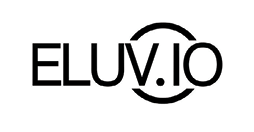Eluvio CEO Michelle Munson Talks Latest Content Fabric Release with New AI and Security Features
In a post-IBC interview, Eluvio Co-Founder and CEO Michelle Munson and I discuss the Content Fabric’s next-gen Casablanca release and the transformative impact of the Content Fabric technology on the media and entertainment industry and premium video on demand.
“Eluvio’s Content Fabric is really a next-generation technology for changing and enabling video over the internet at scale,” Munson says. “The number one thing it does is provide for content distribution that includes the just-in-time composition, transcoding, and playout of live and on-demand streaming.”
The Content Fabric also supports direct serving of static metadata and offers an end-to-end platform for media monetization through data-driven rights enforcement.
“What this really does,” Munson explains, “is open up a whole new set of possibilities for media companies cutting the cost, reducing the complexity, and then also opening up direct distribution possibilities that weren’t there before.”
Leveraging a New Built-In AI Stack
Munson describes September’s IBC 2024 show “as a huge coming out point” for Eluvio with the debut of the Content Fabric’s Casablanca release. This latest version not only marks the introduction of new advanced audio and video features,
but also “a new built-in AI stack.”
AI news was everywhere at IBC, with some AI announcements considerably more momentous than others. What makes the Content Fabric’s new stack significant is how it extends capabilities built into its existing foundations.
“One of the big, different ideas of the Fabric is instead of using files—which are really opaque representations of media—the Fabric represents media in the decentralized software protocol around the network as a composable object. And the object consists not just of the media but also of data,” Munson explains. “So that structure of the content object is natively data-driven and natively a carrier and a holder for AI data. The second thing that’s also very different in the foundations of the Fabric,” she continues, “is when you go to present a rendering, an offering, streaming output, download output, or clipping output to a client or to a viewer, the Fabric is generating that in the software protocol on-demand. And that generation takes in the data and takes in the media that’s part of the decentralized representation and produces the output.”
What makes this architecture a ground-breaking innovation for the industry, she contends, is how the move away from
file-based workflows transforms the media supply chain.
“So much of file-based workflows involves creating localized variants and then copying those files from this company’s location to that company’s location. Underneath that are all the costs that go along with the egress to do that: constant transcoding of stuff that you don’t necessarily use upfront, and then paying for multiple CDNs to push it out. The fact that we can do a native AI generative output in the fabric is
a result of that architecture, not because of layering on AI.”
Among other things, this approach enables the greater personalization so sought after in streaming circles. “One of the great new trends is to take this dynamic representation and dynamic streaming the Fabric provides and combine that with AI data to make it really personalized,” she says. “And we are doing that in spades.”

Game-Changing Search and Indexing
Munson highlights specific AI capabilities in the new Fabric, including a new AI-based clip search feature that dynamically generates clips without creating file copies, significantly reducing costs and complexity.
“Content gets tagged with timecode-accurate tags that come from RAI models and third-party metadata. It gets indexed and then that index is searchable through our search service to yield back both clips as well as full length. Of course,” she continues, “the clips are not file copies that have to be generated and transcoded as proxies and sent out. Instead, they’re virtual URLs that are dynamically generated from the long form.”
This has immediate applications in areas like premium sports broadcasts, she says. “In sports workflows, this is a huge difference, because live becomes VOD and becomes clips without making any file copies, [with] no incremental additional cost.”
This indexing feature also has longer-term benefits beyond quick-turn live-to-VOD and highlights-generation workflows. “What’s most important is ... the overall architecture of being able to index your content in place, and have that indexed data which can be generated from AI and be highly accurate, such as we do with our universal tagger service. That data is able to live with the content, and then finally power both retrieval as well as composition. And that’s the game-changer in the Fabric architecture, which is really just starting to see the future.”
Use cases for this indexing capability include using search results to make personalized playlists, highlight packages, or channels, she says, “and not having to put together multiple pieces or parts to do that sort of thing.” It also gives content owners the ability “to infinitely recombine the same content objects parts into all of these different variants without, again, paying for egress or file copies or retranscoding.”
Bedrock Streaming Partnership
Munson also announces a strategic partnership with Bedrock Streaming to enhance streaming capabilities across Europe. Bedrock, she says, is a leading full-stack streaming provider with six or seven major broadcast customers and roughly 45 million subscribers across Europe. At IBC, Bedrock “announced a strategic partnership with us to utilize the Content Fabric for next-generation streaming capabilities.”
For Bedrock, she says, this means simplifying DRM and end-to-end stream encryption, as well as “being able to push the envelope of efficiency, reducing the cost substantially at the same time, and providing very low-latency live and on-demand streaming.” This partnership will also enable Bedrock “to exploit this data-driven kind of capability in the linear channels so that they can not only do traditional things but push the envelope for personalization.”
How the Fabric Accelerates the Fight Against Fake News
Munson also emphasizes the importance of content authenticity and security, detailing Eluvio’s involvement in an IBC Accelerator project focused on media provenance and verification. IBC Accelerators, she says, “are always good at bringing forth next-generation and groundbreaking problems, but this one was very special because there was extreme interest from many different content rights holder communities, particularly news.” This Accelerator addressed news providers’ critical need “to get back to authenticity in media, to be able to protect the consumer from DeepFakes, and also to be able to respond at scale to what’s going on in social media with the proliferation of fake news. And because of the industry-concerning scope of this issue, there was a very large amount of participation from the sponsors as well as from the technology companies providing solutions.”
The role the Content Fabric plays in media authentication, she explains, “is truly an end-to-end basic principle in the way the Fabric protocol works. The number one point of publishing in the Fabric is that cryptographically, it’s owner-controlled. That means when the publisher is publishing a version of the content, the content in its constituent parts is encrypted for that owner. And then all the changes that are made to it are versioned, meaning that those changes are recorded in a tamper-proof way.”
What’s more, she adds, “those version changes are effectively approved by that owner. So if you’re a consumer looking at the downstream end of this, you have the authenticity of the media and its providence, if you will, through its lifecycle. And then finally, technologically the Fabric makes it super easy and we provide a built-in verification proof for the output from the Fabric, like a live stream, for example, or an on-demand stream to self-verify like you would an SSL certificate verification. And for this Accelerator, we provided the end-to-end provenance, and the dynamic verification of the streaming playout for the news content.”
Munson goes on to explain that this project has two end goals: first, to “make it possible for the consumer to be able to easily suss out what’s authentic from what’s fake, and then secondly, to have a strong sense of what can be done as an ecosystem to be able to have a way to scale up this kind of provenance and authenticity as media changes through the lifecycle.”
To learn more about Eluvio’s Content Fabric and the new Casablanca release, visit eluv.io/content-fabric/technology

Michelle Munson, Co-Founder & CEO, Eluvio

918 Parker St., Unit #3
Berkeley, CA 94710
USA
http://eluv.io
This article is Sponsored Content
Related Articles
Here we reveal the 2024 Streaming Media 100, our list of the top 100 companies in the streaming universe outside of Europe. This list complements the Streaming Media Europe 51, which recognizes Europe's key streaming innovators, exemplars, and disruptors.
21 Oct 2024
The movie-watching experience has entered an unprecedented and thrilling new era of full-immersion entertainment with the arrival of a pioneering, living NFT and Web3 offering from Warner Bros. Home Entertainment: The Lord of the Rings: The Fellowship of the Ring, Extended Edition. This Web3 movie event is fueled by Eluvio, a developer of blockchain-based 4K streaming and ticketing technology and the self-described "blockchain home for crypto content."
09 Feb 2023
Companies and Suppliers Mentioned